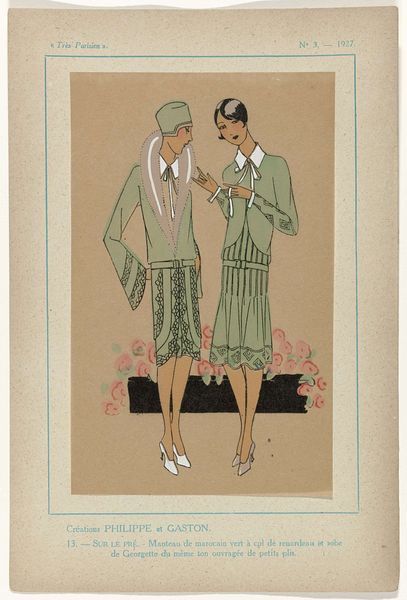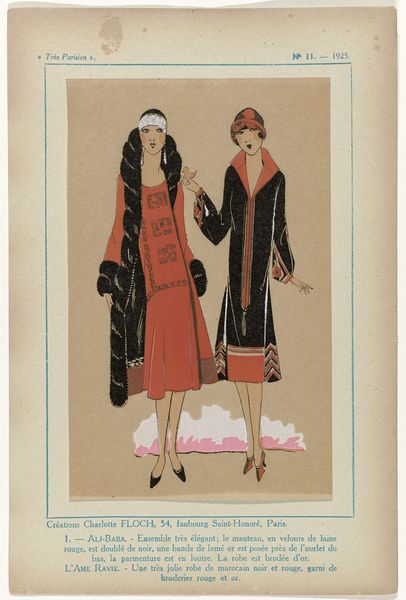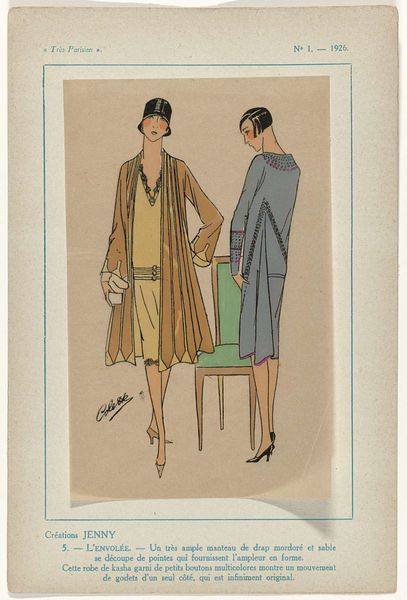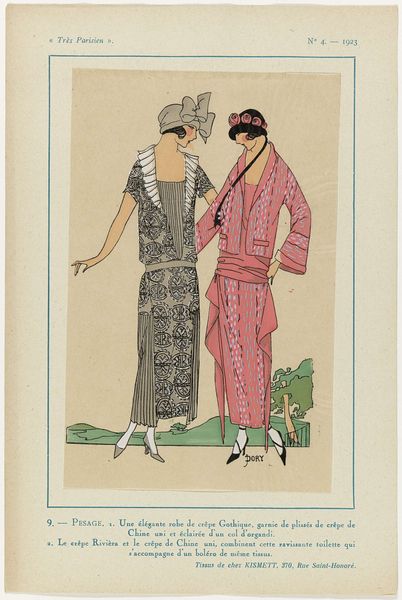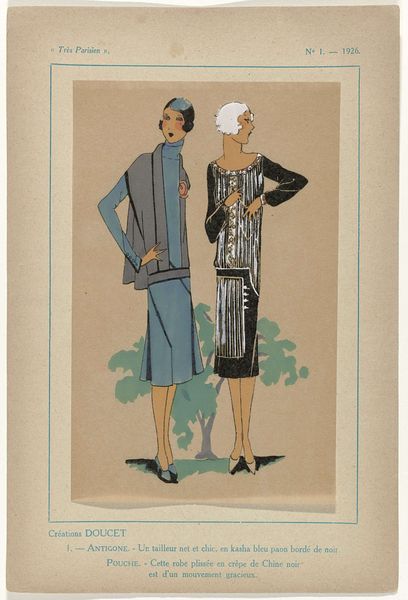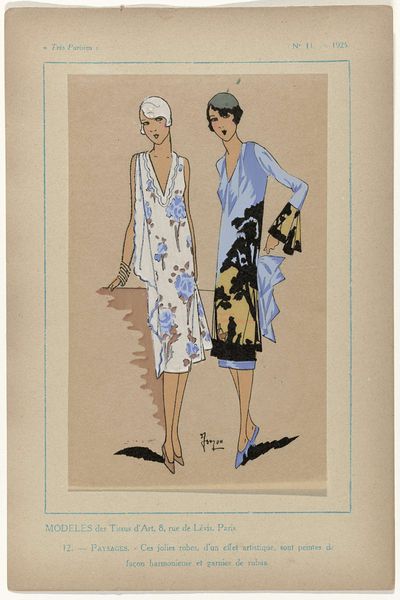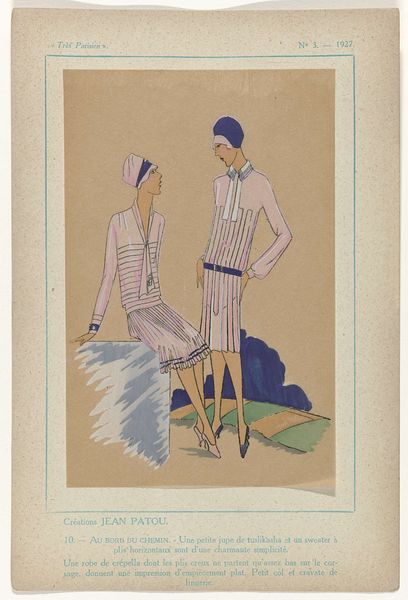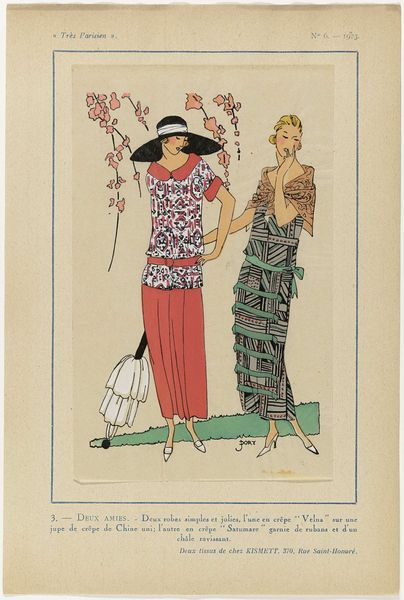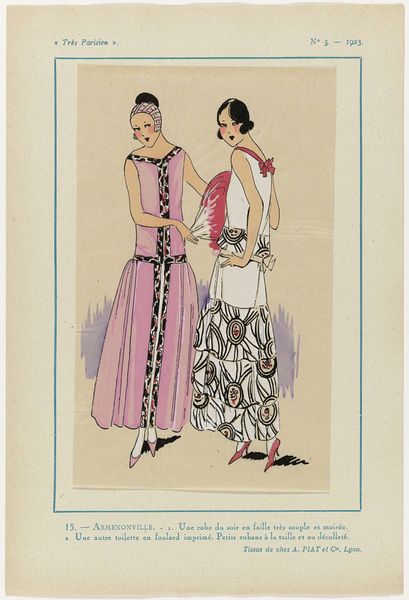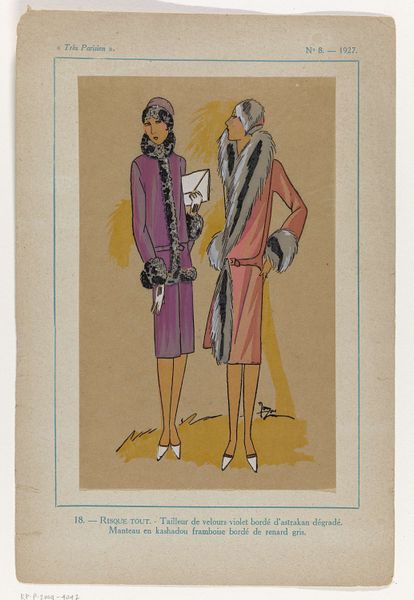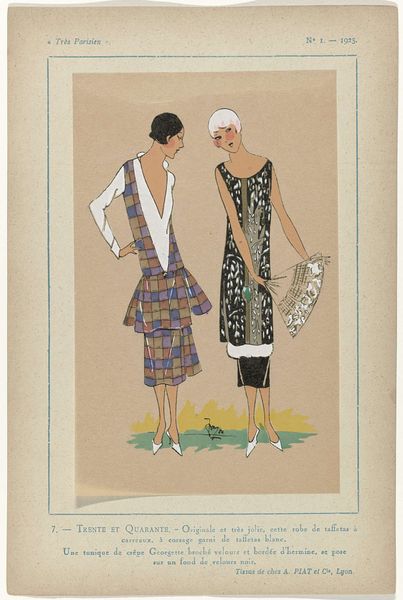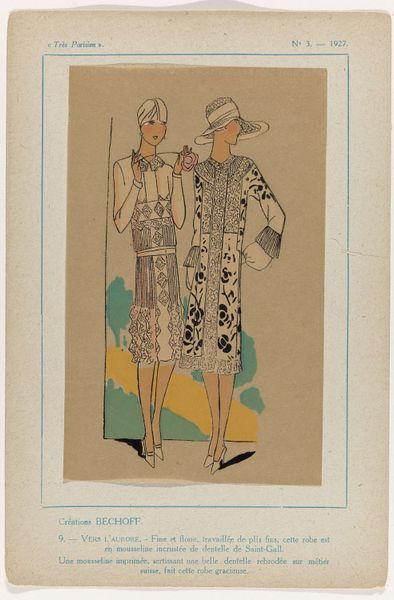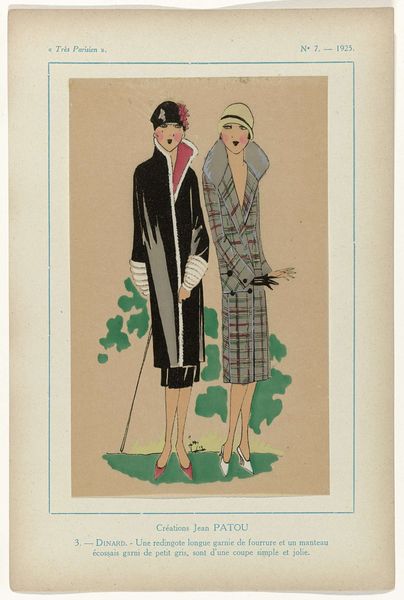
drawing, graphic-art, print
#
portrait
#
art-deco
#
drawing
#
graphic-art
#
blue ink drawing
# print
#
flat colour
#
historical fashion
#
watercolour illustration
Dimensions: height 195 mm, width 120 mm, mm
Copyright: Rijks Museum: Open Domain
Curator: This graphic print is titled "Trés Parisien, 1926, No. 2, Pl. 12.- COQUILLAGES" by G-P. Joumard, held at the Rijksmuseum. It showcases two women in art-deco fashion, rendered in a watercolour illustration style with a distinctly flat colour palette. Editor: Oh, how chic! I adore the subdued tones, it’s as if these women have stepped out of a silent film. But there’s something… almost melancholic about it, don't you think? The figures seem quite stoic. Curator: Interesting. The print emphasizes line and colour blocks. We should note that such prints were very much a tool for distribution and for commercial advertising, aiming for mass consumption of a Parisian style. I wonder how 'Crepella' fabric felt... how it was woven... Editor: Perhaps it’s that simplified design, prioritizing a clean, modern aesthetic, reflecting an age entranced by industrial innovation? Everything about the streamlining... very seductive! But, thinking about those fabrics and what they suggest about comfort versus presentation. Are we trading ease for elegance? Curator: It does make you consider the economics behind those skirts. It's fascinating how the artist uses a very limited, maybe economical, palette - almost sepia - but achieves so much sophistication. The social and manufacturing contexts that were present back then for the consumers, are radically altered today. I'm particularly intrigued by what we miss because of those altered connections to making. Editor: Absolutely! It is like this piece freezes a specific moment in the intersection of fashion, commerce and personal expression. Looking at these details in clothing -- from texture to availability and labor — is all but impossible for the layperson to reconstruct as we see a piece of it captured this far in the past. Curator: Right. And understanding what was gained and lost as we shift away from material understanding - maybe this connects directly with your melancholic tone? Editor: Yes, that tension gives it depth, a lingering question about what this pursuit of style truly costs— in labour and in feeling! Thanks for providing that historical context - its beautiful and terrifying.
Comments
No comments
Be the first to comment and join the conversation on the ultimate creative platform.
